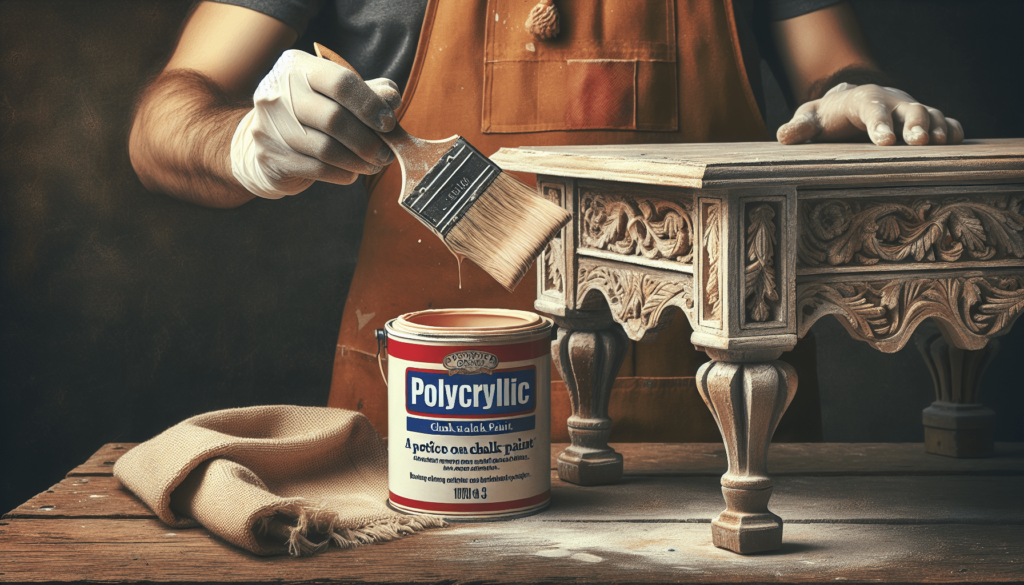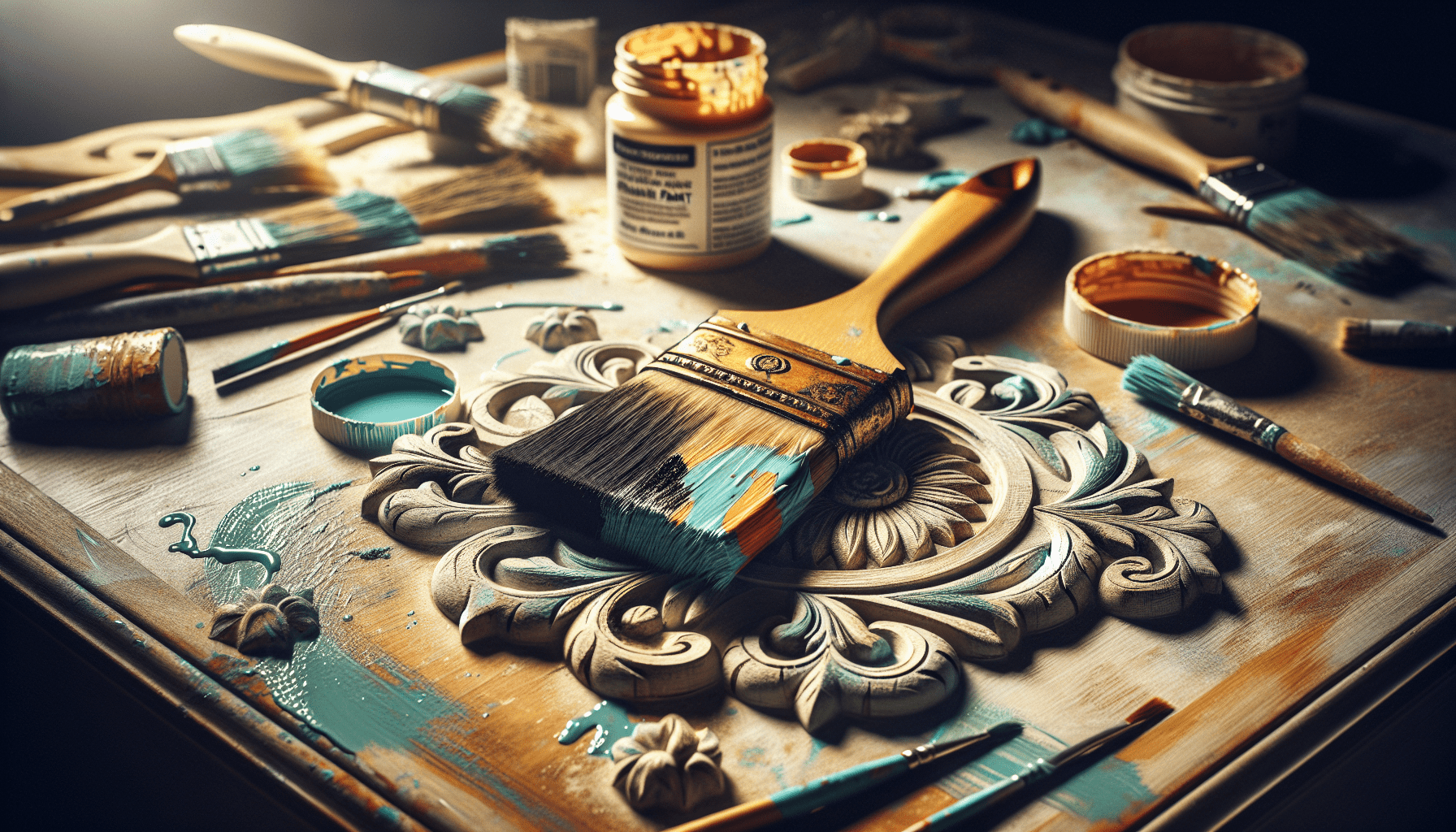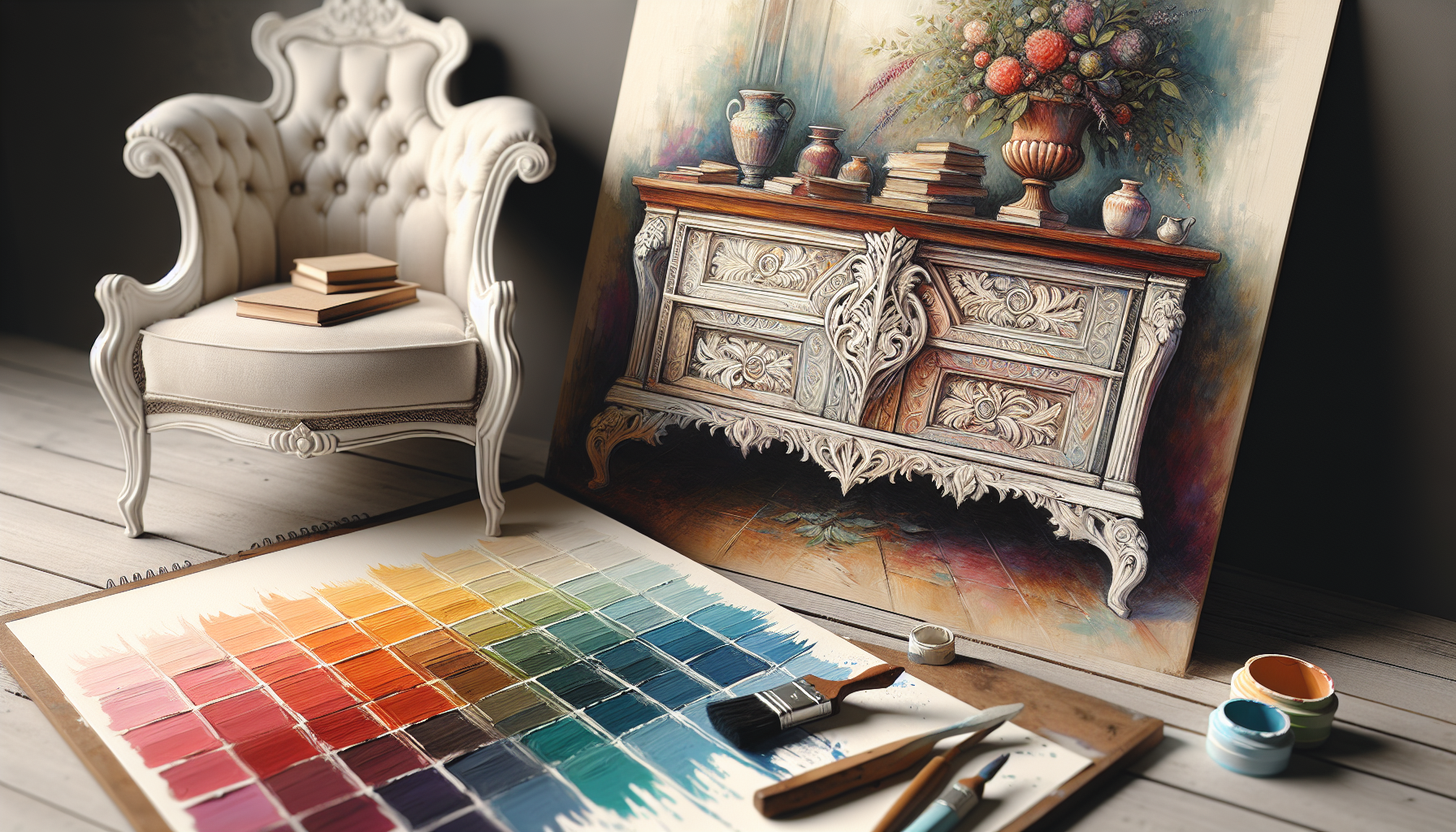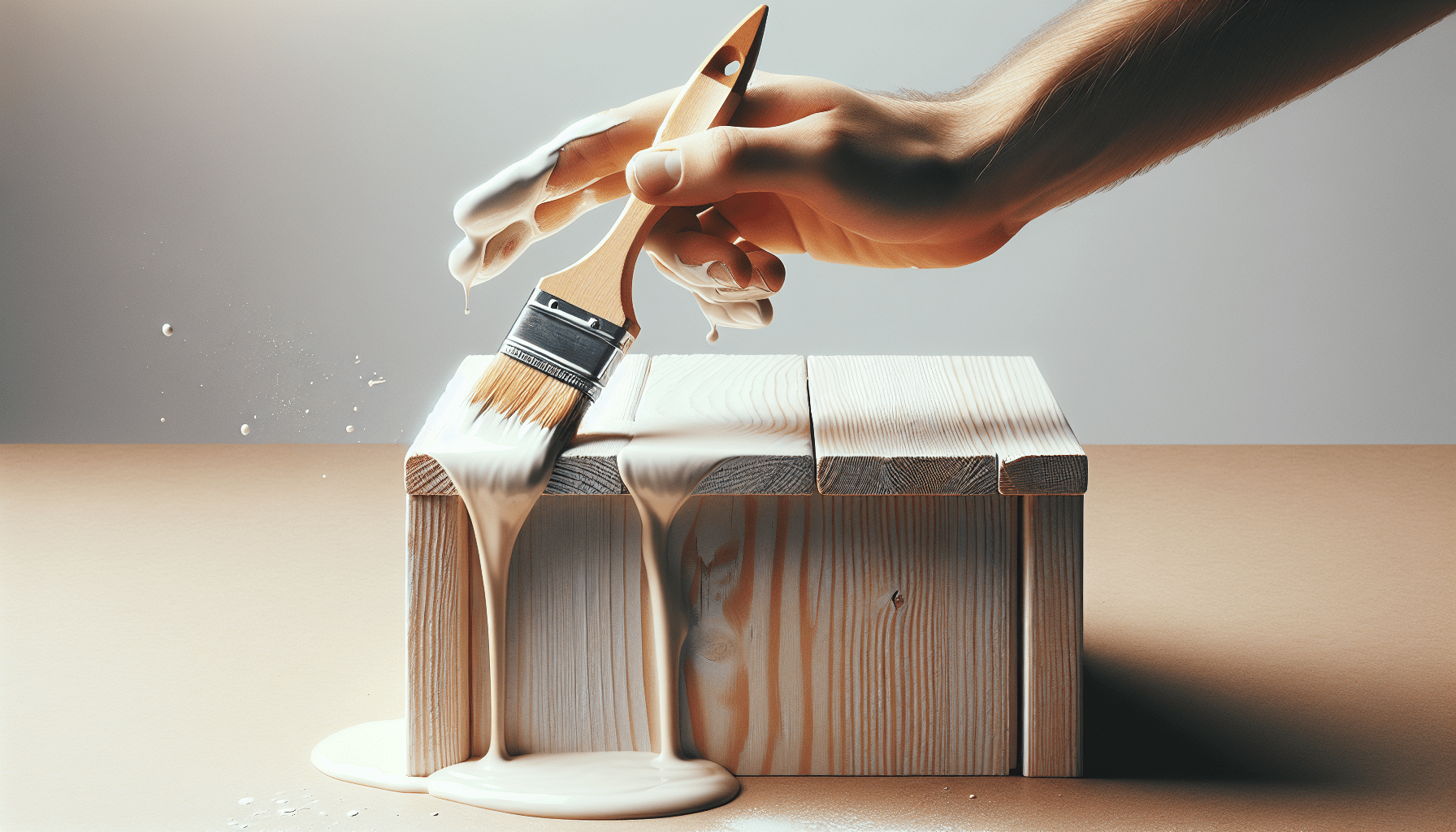Polycrylic, a popular finish among DIY enthusiasts, is commonly used to seal various surfaces. But can it be used to seal chalk paint? This article explores the compatibility of polycrylic with chalk paint, examining its effectiveness in preserving and protecting the unique matte finish. Find out how to achieve a long-lasting and durable result when sealing chalk paint with polycrylic. Discover the benefits and potential drawbacks of this sealing method, providing you with valuable insights to ensure a professional and polished final outcome.

What is Chalk Paint?
Chalk paint is a type of paint that has a matte finish and a soft, velvety texture. It gets its name from its resemblance to chalky, powdered substances. Chalk paint is often used for furniture and home decor projects to achieve a vintage or shabby-chic look. It is known for its versatility and ability to adhere well to various surfaces without the need for extensive priming or sanding.
Definition of chalk paint
Chalk paint is a water-based decorative paint that is commonly used to give furniture and other surfaces a unique, antique finish. It is made from a combination of pigments, binders, and additives that create its distinct chalky texture and appearance.
Properties of chalk paint
Chalk paint has several properties that set it apart from other types of paint. One of its main characteristics is its matte finish, which gives a soft and velvety appearance to painted surfaces. It also has excellent adhesion properties, allowing it to be applied to a wide range of materials, including wood, metal, and even glass. Additionally, chalk paint dries quickly and can be sanded or distressed to achieve different effects.
Common uses of chalk paint
Chalk paint is often used in furniture restoration projects, as it can transform outdated or worn-out pieces into beautiful, vintage-inspired creations. It is also popular for creating decorative finishes on walls, cabinets, and home decor items. Many DIY enthusiasts and professionals choose chalk paint for its ease of use and ability to achieve various finishes, such as smooth or distressed looks.
Introduction to Polycrylic
Polycrylic is a type of water-based protective finish that is commonly used to seal and protect painted surfaces. It offers a clear and durable topcoat that helps to enhance the longevity and appearance of painted projects. Polycrylic is known for its versatility and ability to provide a protective layer without altering the color or finish of the underlying paint.
Definition of polycrylic
Polycrylic is a protective finish that is made from a blend of acrylic polymers. It is available in both brush-on and spray forms, allowing for easy application on a variety of surfaces. Polycrylic dries quickly and has excellent clarity, making it an ideal choice for preserving the look of painted surfaces without adding a glossy or yellowed finish.
Benefits of using polycrylic
There are several benefits to using polycrylic as a sealant for painted surfaces. Firstly, it provides a protective barrier that helps to prevent scratches, stains, and other damage. Polycrylic is also resistant to water, making it a suitable choice for areas that may be exposed to moisture, such as bathrooms or kitchens. Furthermore, polycrylic is easy to apply and dries quickly, allowing for efficient project completion.
Common applications of polycrylic
Polycrylic can be used on a wide range of painted surfaces, including furniture, cabinetry, flooring, and decorative items. It is particularly useful for protecting high-traffic areas or surfaces that may be prone to spills or stains. Polycrylic can be used on both interior and exterior projects, depending on the specific formulation and intended use.
Understanding Chalk Paint Sealing
Why is sealing chalk paint important?
Sealing chalk paint is crucial for protecting the painted surface and ensuring its longevity. Chalk paint has a porous nature, which means that it can absorb liquids and be more prone to stains and damage. Sealing the paint provides a protective barrier that helps to prevent these issues, extending the life of the paint finish and making it easier to clean and maintain.
Different options for sealing chalk paint
There are various options available for sealing chalk paint, depending on the desired finish and level of protection. Wax is a popular choice for sealing chalk paint, as it adds a subtle sheen and can be buffed to achieve a smooth and polished appearance. Other options include polyurethane, varnish, and polycrylic, each of which offers its own unique benefits and characteristics.
Factors to consider when choosing a sealer
When choosing a sealer for chalk paint, it is important to consider factors such as the desired finish, durability, and ease of application. Some sealers, like wax, may require regular maintenance and reapplication, while others, like polyurethane or polycrylic, offer more long-lasting protection. The type of surface, level of use, and personal preferences should also be taken into consideration when selecting a sealer.
Can You Seal Chalk Paint with Polycrylic?
Compatibility of polycrylic with chalk paint
Yes, polycrylic can be used as a sealer for chalk paint. It is compatible with most chalk paint brands and provides an effective and protective finish. However, it is recommended to test a small, inconspicuous area before applying polycrylic over the entire painted surface to ensure compatibility and desired results.
Advantages of using polycrylic as a sealer
Using polycrylic as a sealer for chalk paint offers several advantages. Firstly, polycrylic provides a clear and durable protective finish without altering the appearance or color of the chalk paint. It is easy to apply, dries quickly, and can be brushed on or sprayed, depending on the project requirements. Additionally, polycrylic is resistant to yellowing, ensuring that the chalk paint maintains its original color over time.
Potential drawbacks of using polycrylic with chalk paint
While polycrylic is generally a suitable sealer for chalk paint, there are a few potential drawbacks to consider. Polycrylic can sometimes cause the chalk paint to darken slightly, especially if multiple coats are applied. It may also require more coats compared to wax for achieving a desired level of protection. It is important to follow the manufacturer’s instructions and recommendations when using polycrylic as a sealer.

Step-by-Step Guide: Sealing Chalk Paint with Polycrylic
Preparation of painted surface
Before applying polycrylic to seal chalk paint, ensure that the painted surface is clean, dry, and free of any dust or debris. If necessary, lightly sand the surface to ensure proper adhesion and smooth out any imperfections.
Choosing the right type of polycrylic
Select the appropriate type of polycrylic for the project, considering factors such as the level of protection required, the desired sheen, and the surface type. Polycrylic is available in different formulations, including matte, satin, and gloss finishes.
Application techniques for sealing
Apply polycrylic using a high-quality brush or a foam applicator, ensuring smooth and even coverage. Work in small sections, applying thin coats to avoid drips or pooling. Brush strokes should be made in the same direction as the wood grain or surface texture for a more seamless finish.
Drying and curing time
Allow the initial coat of polycrylic to dry according to the manufacturer’s instructions before applying subsequent coats. The drying time can vary depending on factors such as temperature and humidity. It is important to allow sufficient drying and curing time between coats to ensure optimal results.
Applying multiple coats if necessary
If desired, additional coats of polycrylic can be applied to further enhance the protection and durability of the finish. Follow the same application techniques and drying times as previously mentioned. Avoid excessive brushing or overworking the surface to minimize the risk of brush strokes or streaks.
Tips for Achieving a Quality Finish
Proper surface preparation
Ensure that the surface to be painted and sealed is well-prepared, clean, and smooth. Remove any existing finishes, repair any damages, and sand the surface if necessary. Proper preparation allows for better adhesion and a more professional-looking finish.
Avoiding brush strokes or streaks
When applying polycrylic or any sealer, it is crucial to use the proper technique to minimize the appearance of brush strokes or streaks. Apply the sealer in thin coats, using long, even strokes in the direction of the wood grain or surface texture. Avoid excessive brushing or overworking the sealer, as this can create an uneven or streaky finish.
Applying thin and even coats
Thin coats of polycrylic are preferable to thick ones, as they dry more evenly and are less likely to result in drips or a cloudy appearance. Apply the sealer using a quality brush or foam applicator, working in small sections and ensuring smooth and even coverage. Allow each coat to dry before applying additional layers.
Allowing sufficient drying time between coats
Proper drying time between coats is essential for achieving a smooth and flawless finish. Follow the manufacturer’s instructions for recommended drying and curing times. It is important not to rush the process, as premature application of additional coats can result in uneven drying, streaks, or other imperfections.
Sanding and buffing for a smoother finish
If desired, sanding between coats of polycrylic can help to achieve an even smoother finish. Use a fine-grit sandpaper or a sanding block to lightly sand the surface, removing any imperfections or brush marks. After sanding, wipe away any dust with a clean, lint-free cloth. Buffing the final coat with a soft cloth can further enhance the smoothness and sheen of the finish.
Common Questions and Concerns
Can you use other sealers with chalk paint?
Yes, there are several other sealers that can be used with chalk paint, such as wax, polyurethane, and varnish. Each sealer offers different characteristics and finishes, so it is important to choose one that best suits your specific project and preferences.
How long does polycrylic last on chalk paint?
The longevity of polycrylic on chalk-painted surfaces can vary depending on factors such as the level of use, environmental conditions, and proper maintenance. When properly applied and cared for, polycrylic can provide a long-lasting protective finish for many years.
Is polycrylic more durable than wax?
Polycrylic is generally considered to be more durable and long-lasting than wax when used as a sealer. While wax can provide a beautiful sheen and protective layer, it may require regular reapplication and maintenance. Polycrylic, on the other hand, offers enhanced durability and requires less upkeep.
Does polycrylic yellow over time?
Unlike some other sealers, polycrylic is known to have minimal yellowing over time. It is designed to maintain the clarity and color of the underlying paint, allowing the chalk paint to retain its original appearance.
Can you paint over polycrylic-sealed chalk paint?
Yes, it is possible to paint over a polycrylic-sealed chalk paint surface. However, it is important to properly prepare the sealed surface by lightly sanding it and ensuring it is clean and free of any debris. The new paint may require additional coats or may behave differently on the sealed surface compared to an unsealed one.
Conclusion
In conclusion, sealing chalk paint is an important step to protect and enhance the durability of painted surfaces. Polycrylic is a compatible and effective sealer option for chalk paint, offering a clear and durable protective finish without altering the appearance or color. By following the recommended steps and techniques, you can successfully seal chalk paint with polycrylic, ensuring a beautiful and long-lasting finish.
Additional Resources
For more information on chalk paint and its applications, consider exploring the following resources:
Recommended brands of chalk paint
- Annie Sloan Chalk Paint
- Rust-Oleum Chalked Paint
- Behr Chalk Decorative Paint
Guides and tutorials on using polycrylic
- Video Tutorial: “How to Apply Polycrylic to Furniture” by TheDIYPlan
- Article: “Guide to Using Polycrylic Over Chalk Paint” by The Purple Painted Lady
Tips for maintaining chalk-painted surfaces
- Article: “How to Care for Chalk Painted Furniture” by The Spruce
- Video Tutorial: “How to Clean and Maintain Chalk Painted Surfaces” by Country Chic Paint



